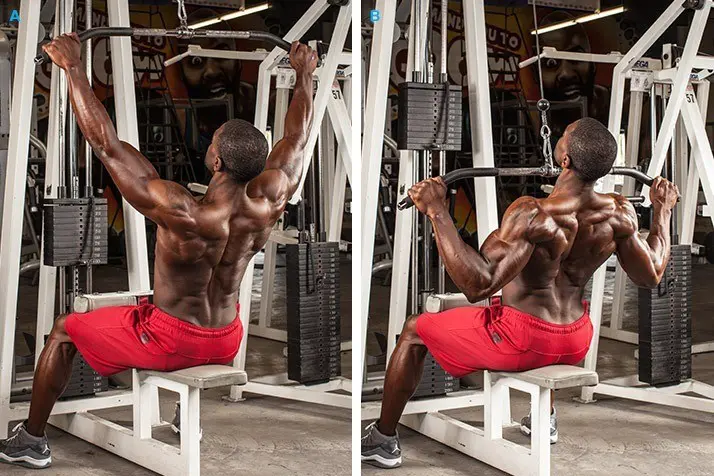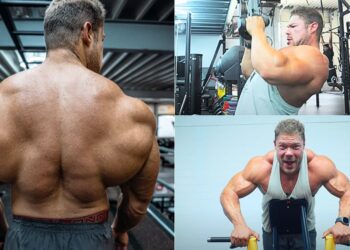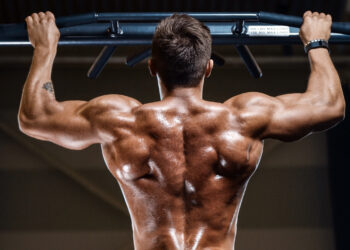A lot of exercisers are guilty of treating back training as an afterthought. They spend hours training their chests, abs, and arms, and completely forget about the back muscles they CAN’T see in the mirror. Authored by Patrick Dale, a seasoned personal trainer and ex-Marine, and updated by Andrew Peloquin, NFPT-CPT, this guidance is crafted to emphasize the impact a well-trained back has on your overall look.
Back training is also essential for injury prevention. The muscles across your joints work in opposing pairs, like the biceps and triceps, or the quadriceps and hamstrings. If you neglect one side, you risk creating imbalances that could lead to injury. Our expert-driven advice is to balance your routine to maintain both aesthetic and functional body integrity.
If you’ve been overlooking your back training, or simply want to enhance your routine, integrate these two expert-formulated back-building workouts into your weekly schedule. They’re designed not just to improve your appearance but to contribute to a stronger, more injury-resistant body.
Two back workouts for double the gains
Most gym-goers train their back muscles just once a week. That’s not really enough if you are serious about building the ultimate back. Instead, we’re going to give you two different back workouts so you can train this vital muscle group twice per week.
Each workout uses different exercises. This will help you develop bodybuilder size AND powerlifter strength. In other words, you won’t just look strong; you’ll actually be strong too.
These workouts are designed for intermediate and advanced exercises only. If you are a beginner, focus on building some basic size and strength before following these specialist back-building workouts.
Level Up Your Fitness: Join our 💪 strong community in Fitness Volt Newsletter. Get daily inspiration, expert-backed workouts, nutrition tips, the latest in strength sports, and the support you need to reach your goals. Subscribe for free!
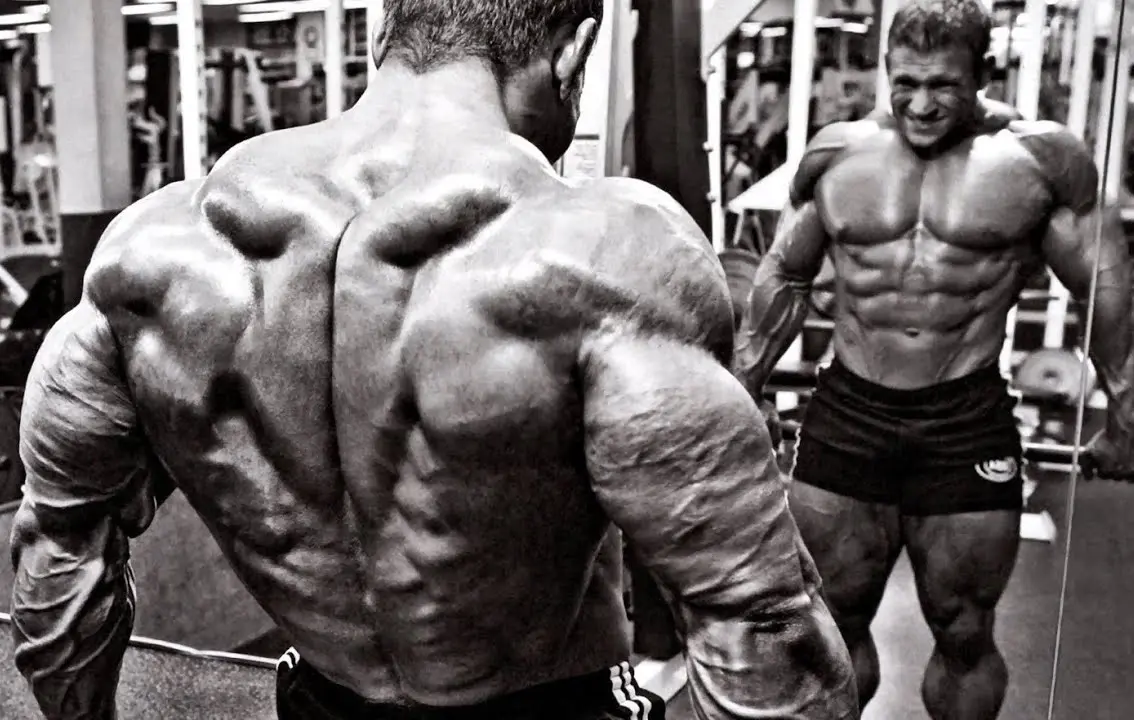
Don’t do these workouts on consecutive days; you probably won’t recover enough, and you’ll soon feel tired, sore, and overtrained. Instead, do them a couple of days apart, e.g., Monday and Thursday.
Finally, remember to warm up before each and every workout. This will not only lower your risk of injury; it will also ensure that you get the best results possible from each workout.
First Back Workout
| Exercise | Sets | Reps | Recovery | |
| 1 | Deadlifts | 5 | 5 | 3 minutes |
| 2 | Pull-ups | 4 | 8 | 2 minutes |
| 3 | Cable rows | 3 | 10 | 90 seconds |
| 4 | Pullovers | 3 | 12 | 60 seconds |
| 5 | Face pulls | 3 | 15 | 60 seconds |
Exercise instructions:
Deadlifts
Deadlifts are the king of back exercises. They work every muscle in your upper, lower, and mid-back, as well as your glutes, hamstrings, quads, and core.
- Place a loaded barbell on the floor. Stand with your toes under the bar, feet roughly hip-width apart. Bend forward and hold the bar with an overhand or mixed grip, where one hand faces forward, and one faces backward.
- Drop your hips, lift your chest, and pull your shoulders down and back.
- With straight arms, and without rounding your lower back, drive your feet into the floor and stand up straight. Do not lean back!
- Push your hips to the rear, bend your knees, and lower the bar back to the floor.
- Reset your position and repeat.
Fitness Volt’s powerlifting coach, Enrique Santatecla, perform the barbell deadlift correctly in the video below:
Pull-ups
Pull-ups are one of the best lat width-building exercises around. Use a wider-than shoulder-width grip for best results. If you can do more than eight reps, use a chin/dip belt to increase the load and make this exercise harder.
- Hold an overhead bar with a wider than shoulder-width overhand grip.
- Hang with your arms straight and your feet off the floor.
- Lean back slightly and, without kicking or jerking, pull your chin up and over the bar.
- Lower yourself down slowly and smoothly and repeat.
Cable rows
This exercise works your lats and also your mid-traps and rhomboids, which are the muscles across and between your shoulder blades.
- Attach a parallel grip handle to a low pulley machine. Sit on the machine with your knees slightly bent.
- Grab the handles and sit up straight. Do not round your lower back.
- Without leaning forward or backward, pull the handle into your abdomen and then straighten your arms.
- If you have to lean forward and backward to complete your reps, the weight is too heavy!
Watch our training coach Enrique Santatecla demonstrate the correct seated cable row below:
Pullovers
Often thought of as a chest exercise, pullovers are also an excellent lat exercise. This move will finish off your lats without having to use your hard-worked biceps.
Level Up Your Fitness: Join our 💪 strong community in Fitness Volt Newsletter. Get daily inspiration, expert-backed workouts, nutrition tips, the latest in strength sports, and the support you need to reach your goals. Subscribe for free!
- Hold a dumbbell in both hands with your palms against the inside of the weight plates.
- Lie back on a flat or slightly declined bench and press the weight up and over your chest.
- With slightly bent arms, lower the weight back and over your head until your biceps brush your ears. Pull the dumbbell back up and over your chest and then repeat.
Face pulls
Your final exercise targets your middle traps and rhomboids. These are important postural muscles. Use a lightweight and focus on pulling your shoulders back and together.
- Attach a rope handle to an adjustable pulley machine. Set the pulley to eye-level.
- Hold the ends of the handle and step back with your arms straight and parallel to the floor. Use a split stance for balance.
- Bend your arms and pull the ends of the handles in toward your face. Imagine sticking your thumbs in your ears. Extend your arms slowly and then repeat.
Watch Enrique Santatecla, perform the face pull exercise:
Second Back Workout
| Exercise | Sets | Reps | Recovery | |
| 1 | Pendlay rows | 5 | 5 | 3 minutes |
| 2 | Lat pulldowns | 4 | 8 | 2 minutes |
| 3 | Power shrugs | 3 | 10 | 90 seconds |
| 4 | Single-arm cable rows | 3 | 12 | 60 seconds |
| 5 | Band pull aparts | 3 | 15 | 60 seconds |
Pendlay rows
Pendlay rows are named after American weightlifting and powerlifting coach Glen Pendlay. This exercise will build back size and strength.
- Place a loaded barbell on the floor. Stand with your toes beneath the bar, feet roughly shoulder-width apart.
- Lean forward and hold the bar with an overhand, shoulder-width grip. Straighten your arms, lift your chest, and slightly arch your back. Your knees should be partially bent. This is your starting position.
- Without jerking with your back, pull the bar off the floor and into your abdomen. Lower the bar back to the floor and repeat.
- Each rep should start from a dead stop, so no bouncing!
Watch Enrique Santatecla from Fitness Volt demonstrate the correct pendlay rows below:
Lat pulldowns
Lat pulldowns are a good alternative to pull-ups. Use an underhand, shoulder-width grip to work your back muscles from a new angle.
- Adjust the pads so that they hold you securely in place while you work out. Grab the handle with a supinated or palms-up grip and sit down. Lean back slightly.
- Leading with your elbows, pull the bar down to the top of your chest.
- Extend your arms, and then repeat.
Power shrugs
While some people like to train traps with shoulders, it’s really an upper back muscle. This exercise is a great trap builder and will also build and strengthen your lower back too.
- Grip and hold a barbell with an overhand, shoulder-width grip. Use straps if necessary. Stand with your feet shoulder-width apart, knees slightly bent.
- Lean forward from your hips and lower the bar down to mid-thigh level.
- Stand up quickly and simultaneously shrug your shoulders. Keep your arms straight.
- Pause with your shoulders held high.
- Lower the weight and then go again.
Watch Enrique Santatecla demonstrate the power shrugs below:
Single-arm cable rows
This unusual exercise allows you to train one side of your back at a time. It also takes your lats through a large range of motion, which is beneficial for muscle growth.
- Attach a single D-handle to a low pulley row machine.
- Sit on the bench with your legs slightly bent. Grab the handle with one hand and sit up straight.
- Without leaning or forward, or twisting your shoulders, pull the handle into the side of your abdomen. Straighten your arm and repeat.
- Do the same number of reps on both arms.
See Fitness Volt’s coach, Enrique Santatecla, demonstrate the perfect Single-Arm Cable Row below:
Band Pull Aparts
The last exercise in this workout is for your postural muscles. Improving your posture will have a significant effect on not only how you look but also how you feel. Poor posture is a common cause of back, shoulder, and neck pain.
- Hold a resistance band with an overhand grip. Raise your arms forward and up to shoulder-height.
- Open your arms and spread the band out across your chest. Slowly return to the starting position and repeat.
Back Anatomy
Building a bigger, stronger back requires more than just a few sets of pulldowns and rows. Why? Because your back is made up of several different muscles, some of which have more than one function. Because of this, a good back workout should contain a range of different exercises.
The main muscles that make up your back are (1):
- Latissimus dorsi– called the lats for short, this muscle is located on the side of your upper back. When well developed, the lats can resemble wings. The lats are responsible for extending your shoulder joint backward and drawing your upper arm down and in toward the midline of your body, a movement correctly called adduction. They also rotate your upper arms inward.
- Rhomboids – these small muscles are located between your shoulder blades. They pull your shoulders back and are important for upper back thickness as well as posture.
- Trapezius – known as the traps for short, this large kite-shaped muscle covers most of your upper back. It has three functions and is responsible for shoulder elevation, shoulder depression, and shoulder retraction. Big, strong traps make your upper back thicker and more powerful.
- Erector Spinae – Erector Spinae is the collective name for the muscles that run up the sides of your spine. It extends your spine and also helps keep your spine rigid during exercises like deadlifts and bent over rows. Erector Spinae also includes your lower back muscles.
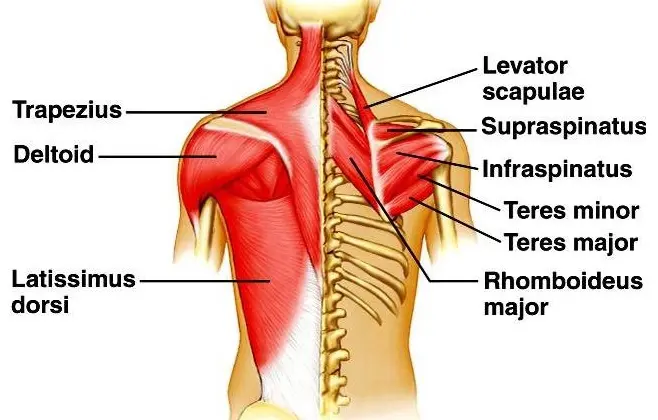
More back workout you might like:
- 8 Best Lat Exercises For A Bigger, Stronger Back
- How To Build Your Best Back Ever With Pendlay Rows
- Strength Tips For Guarding Your Back
- Big Ramy Build His Monstrous Wide Back
The Wrap-up
If you want a bigger, stronger back, it’s time to make it a training priority. A couple of sets per week of pulldowns or rows won’t get the job done. Instead, you need to commit to training your back hard twice a week. Follow this program for 6-8 weeks, and you’ll be amazed at the progress you can make.
References:
- Modes, Robert J.; Lafci Fahrioglu, Sevda (2019), “Anatomy, Back”, StatPearls, StatPearls Publishing, PMID 30969568 https://www.ncbi.nlm.nih.gov/books/NBK539746/
Article Updates Timeline:
Our editorial team experts constantly update the articles with new information & research, ensuring you always have access to the latest and most reliable information.
January 1, 2024
Updated By
Editorial Team
December 28, 2023
Updated By
Editorial Team
November 9, 2023
Written By
Patrick Dale, PT, ex-Marine
Updated By
Andrew Peloquin NFPT-CPT
Fact Checked By
Tom Miller, CSCS

